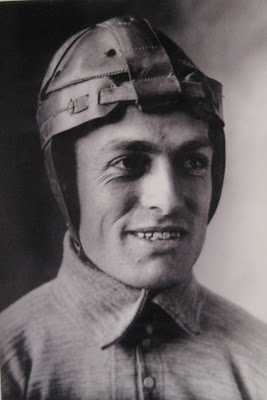 Rin Tanaka has outdone himself. The master of books on vintage clothing has published the definitive history of American motorcycle gear, 'Harley-Davidson Book of Fashions: 1910s - 1950s', after he was given free access to the Harley-Davidson Museum and Archives, with over 100,000 photographs spanning their entire history from 1908 to the present. H-D was one of the first motorcycle manufacturers to hire
Rin Tanaka has outdone himself. The master of books on vintage clothing has published the definitive history of American motorcycle gear, 'Harley-Davidson Book of Fashions: 1910s - 1950s', after he was given free access to the Harley-Davidson Museum and Archives, with over 100,000 photographs spanning their entire history from 1908 to the present. H-D was one of the first motorcycle manufacturers to hire  professional photographers to document their progress, and kept photographic and documentary records of their various lines of accessories which they offered from 1914, along with the entire run of The Enthusiast magazine and contributions from various dealers, clubs, and race promoters.
professional photographers to document their progress, and kept photographic and documentary records of their various lines of accessories which they offered from 1914, along with the entire run of The Enthusiast magazine and contributions from various dealers, clubs, and race promoters.
With access to such a vast array of totally cool stuff, Rin couldn't fail to make an outstanding book. His specialty has been a series of obsessive picture books documenting in chronological order various styles of motorcycle jackets ('Motorcycle Jackets: A Century of Leather Design' and 'Motorcycle Jackets: Ultimate Biker's Fashions'), helmets ('Motorcycle Helmet: the 1930s to 1990s'), t-shirts (My Freedamn! 3, 4), etc. He was also granted the rights to publish recently found documentation (photos and film) of Steve McQueen's foray into the ISDT, which he published as '40 Summers Ago' (and which I also highly recommend).

One doesn't really think of 'Fashions' per se when the name Harley comes up, but Rin makes a compelling case that their extensive line of Motor Clothing, produced for the last 90-odd years, has made a sartorial impact far beyond those who simply ride H-D motorcycles. The book, which is large format (11" x 14") and beautifully printed, moves between official publications / catalog photos, and
 shots of contemporary riders actually using the purpose-designed clothing and accessories in races, club events, official business, and the military. Each chapter focuses on a decade (1910s, 20s, etc), and shows the evolution of 'gear' as motorcycling itself changed and conditions demanded new and better products. He also explores how customization of clothing (and by implication, the bikes too) developed from various small accessories into the blaze of Kustom Kulture in which we now live.
shots of contemporary riders actually using the purpose-designed clothing and accessories in races, club events, official business, and the military. Each chapter focuses on a decade (1910s, 20s, etc), and shows the evolution of 'gear' as motorcycling itself changed and conditions demanded new and better products. He also explores how customization of clothing (and by implication, the bikes too) developed from various small accessories into the blaze of Kustom Kulture in which we now live.
The 600 photographs are luscious and beautifully reproduced, and lots of surprises turn up, such as this 'Harley' Board Track racer which uses a Cyclone engine with one cylinder blanked off! Rin isn't a technical virtuoso, and misses many fascinating tidbits (like the Cyclone hybrid) in his descriptions, nor is his English erudite, but he knows his gear, and he has the eye of a designer. He's clearly had more help with the text in this book than his previous efforts (especially the 'My Freedamn!' series, which have wonderfully awful writing), as it mattered more I'm sure
 to H-D to have a well-written historical account. But, as you flip through the book, the images are solidly emphasized, while the text is minimal - there are times when a bit more exposition would be welcome, but in truth I imagine that few people have a total grasp over the enormity of the Archive and all the details represented.
to H-D to have a well-written historical account. But, as you flip through the book, the images are solidly emphasized, while the text is minimal - there are times when a bit more exposition would be welcome, but in truth I imagine that few people have a total grasp over the enormity of the Archive and all the details represented.
The first edition has just come out this August, and the print run is 10,000 copies - huge by motorcycle book standards, but with H-D attached to the project, I imagine this book will sell out, as have most of Rin's other works. Cost is around $80, and dealers can be found through MyFreedamn.com, or google it!






































